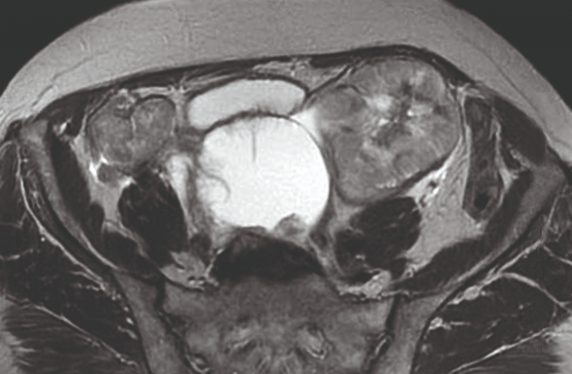Ovarian cancer test more effective than previously thought, researchers say

Ovarian cancer test CA125 is ten times more effective at spotting ovarian cancer in women with symptoms than previously thought, according to a large study of its use in general practice.
This is the first trial of the test in general practice and experts say it will have implications for the diagnosis of ovarian cancer in general practice.
Analysis of data from 50,780 women who visited GPs in England between 2011 and 2014 with possible features of ovarian cancer and had CA125 levels tested found that 10% of women who had an abnormally high level of CA125 in their blood were found to have ovarian cancer.
Presenting the research at the National Cancer Research Institute’s annual conference in Glasgow, the authors said the figure was much higher than previously thought and ten times higher than the estimate given in the UK’s 2011 NICE guidelines on ovarian cancer diagnosis which suggested 1% would be diagnosed with ovarian cancer.
GPs have said this research could help diagnose ovarian cancer at an earlier stage and improve chances of successful treatment.
In the study, 456 women (0.9%) were subsequently diagnosed with ovarian cancer, with the rate of ovarian cancer three times higher in those over the age of 50.
At a CA125 threshold of >35U/ml cut-off, 15% of women over 50 years and 3% of women under 50 were found to have ovarian cancer.
A CA125 level of exactly 41 U/ml in women over 50 years and 76 U/ml in women under 50 equated to an ovarian cancer positive predictive value of 3% – the threshold at which NICE advocates urgent cancer investigation or referral, the researchers said.
Results also showed that around 17% of women 50 years or older with an abnormal result were diagnosed with another form of the disease, such as pancreatic, lung or womb cancer.
NICE guidelines from 2011 said: ‘Assuming a prevalence of ovarian cancer in women with symptoms presenting to primary care of 0.23%, the positive predictive values of the individual tests were 0.81% for serum CA125 (Myers et al., 2006).
‘This means that around 1 in every 100 women referred to secondary care with positive serum CA125 or ultrasound would have ovarian cancer.’
Dr Richard Roope, a GP in Fareham and member of the National Cancer Advisory Group, said: ‘This looks an important research finding. Ovarian cancer is one of the more challenging cancers to diagnose, often presenting with non-site specific symptoms.
‘CA-125 is a very accessible test, and we GPs should be checking it as part of an assessment in any woman over 50 who has IBS type symptoms for the first time (for example bloating, early satiety, frequent abdominal or pelvic pains), urinary frequency or urgency – particularly with a normal MSU, unexplained weight loss, fatigue or change in bowel habit. It is also important to note, even if the CA-125 is “normal” then good safety netting advice should be given: if symptoms persist or progress to seek further advice.
‘If all GPs and other frontline primary care clinicians adopted this we would diagnose more early-stage ovarian cancer, improving the chances of successful treatment.’
Dr John Cosgrove, a GP partner in Atherstone, Warwickshire, said: ‘The sensitivity and specificity of any given test is determined by the prevalence of the condition in the test population, so it is particularly helpful that this test has been evaluated in the GP population. That being the case, GPs ought to be able to apply this research directly to their own patients.’
Study leader Dr Garth Funston, a clinical research fellow at the University of Cambridge, UK, said the work showed CA125 is a very useful test for ovarian cancer.
‘It’s important that GPs have effective tools to detect ovarian cancer early and ensure patients are referred appropriately.
‘While CA125 is widely used in general practice in the UK and internationally, prior to this study, it was unclear how effective a test it really was in general practice.’
The researchers are working on a prediction tool that incorporates their findings and helps GPs pick up cases of ovarian cancer.
Pulse July survey
Take our July 2025 survey to potentially win £1.000 worth of tokens

Visit Pulse Reference for details on 140 symptoms, including easily searchable symptoms and categories, offering you a free platform to check symptoms and receive potential diagnoses during consultations.











